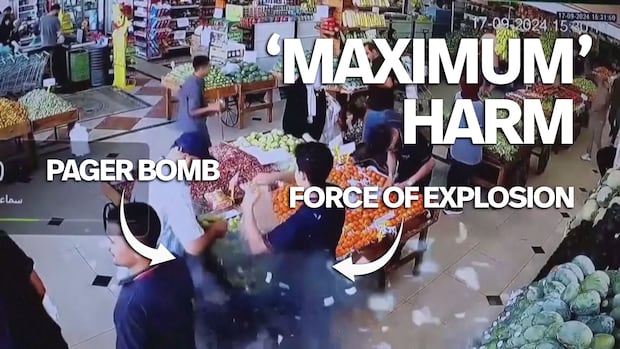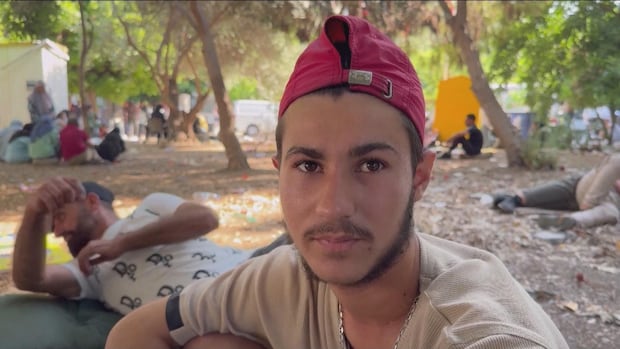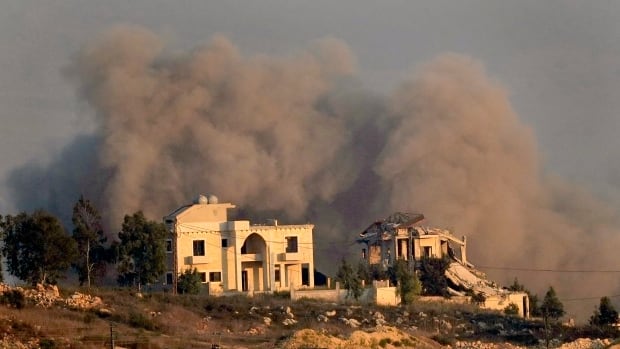
The threat appears real.
On a day when Israeli jets hit more than 1,500 targets, many deep in Lebanon’s Bekaa Valley, and others killing a senior commander of the militant group Hezbollah, Israeli Defence Minister Yoav Gallant told troops the operation is “intensifying” daily.
Lebanon reported 569 people have been killed and 1,835 injured in Israeli airstrikes since Monday, including 50 children.
Israel demands that Hezbollah move its weapons and fighters north of the Litani River, which runs between four and 30 kilometres from the Lebanese border. That’s to protect more than 60,000 residents of Israel’s north, forced to flee border communities 11 months ago to avoid daily rocket and drone attacks.
If there’s no pullback, Gallant indicated, a ground invasion of Lebanon’s south could come next. “Preparations must be made,” he said, though no details or deadline has yet been given.
In a background briefing Tuesday evening, a senior IDF official told CBC News in Jerusalem that “multiple brigades, armoured and infantry” have been massing at the border, “holding the line, training, getting familiar” with the region.
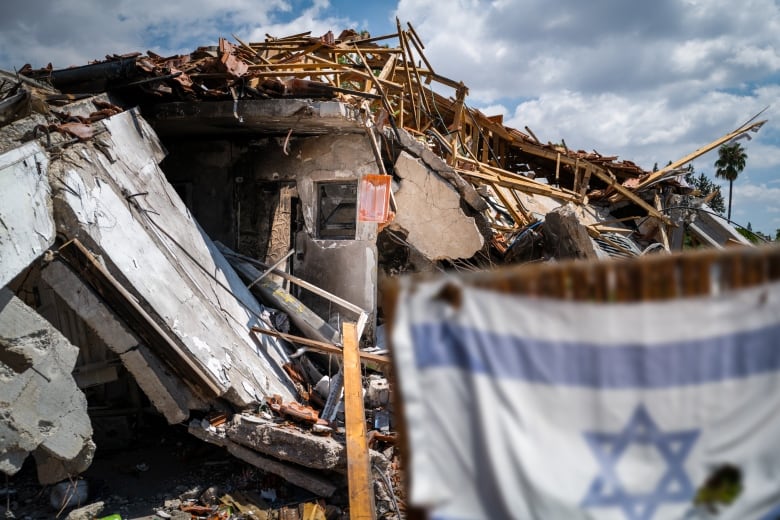
“We’re ready to go and waiting for a government decision,” the official said. The IDF insisted he not be identified, and that comments be approved for publication. No changes were made.
Tens of thousands of troops, including some of Israel’s most elite units, have been moved from fighting Hamas militants in southern Gaza to the north.
But just as Lebanon’s green mountains are distinct from Gaza’s flat desert, this potential invasion is promising to look very different from the ongoing one into the Palestinian territory that began almost a year ago.
“The IDF is going to be more fierce and more lethal,” said the official, predicting that troops will move quickly through the rural areas, where “it’ll be much easier for us to attack” Hezbollah fighters than it has been to operate in Gaza’s dense urban environment.
A strategy of ‘shock and awe’
Observers like former Brig. Gen. Amir Avivi, who now chairs Israel’s Security and Defence Forum, sees the ground assault, combined with ongoing heavy air attacks, as a strategy of “shock and awe.”
“Basically it’s creating a reality that Hezbollah is experiencing a real danger of destruction,” he said.
Not only does Israel say it has wiped out most of Hezbollah’s leadership in targeted strikes in the past days, but it is accused of killing 32 and injuring thousands of fighters and civilians by booby-trapping the militia’s pagers and walkie-talkies to explode last week. That has disrupted Hezbollah’s communications network and, says Avivi, made it a less dangerous enemy.
“They are weakening at this stage by the hour,” the senior IDF officer told CBC News, though he still says Hezbollah is a more formidable force than Hamas ever was in Gaza, comparing Lebanon’s militia to “a professional sports franchise,” while Hamas is more like “a minor league team.”
Yaakov Amidror, a former general and national security adviser to Prime Minister Benjamin Netanyahu, calls operations so far a “huge success,” but he also warns against complacency. Despite all the airstrikes targeting Hezbollah’s missiles and rockets, “it’s not even the beginning of the beginning of what should be destroyed,” he said to foreign journalists in Jerusalem.
Hezbollah is Iran-backed and could still be resupplied and reinforced, dragging out any ground war.
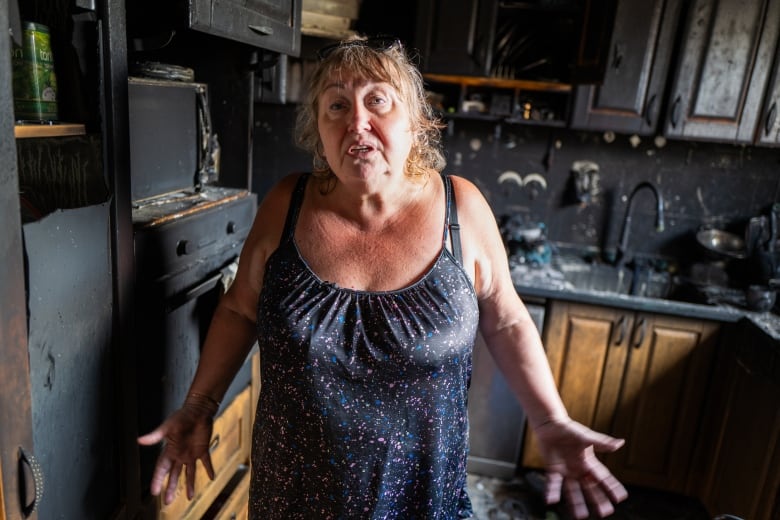
Israeli military says it is prepared
Israel has struggled to find an exit strategy and a day-after plan for Gaza, despite using overwhelming force against Hamas. Things could be even more complicated, says Heiko Wimmen, a Beirut-based analyst for International Crisis Group.
“Once you’re in, what do you do? How do you change the strategic situation before you leave?” he said.
And even with a buffer zone, Hezbollah’s rockets and missiles would still have enough range to hit northern Israel.
An emergency official from Sidon municipality in Lebanon says schools are being opened to help people fleeing from the south as conflict between Israel and Hezbollah escalates.
In a speech blaming Israel for the pager attack last week, Hezbollah leader Hassan Nasrallah called it a “declaration of war,” promising an “inferno if you come to our doorstep” in a ground attack.
Lebanon’s southern villages are mostly deserted now, with some 100,000 locals also fleeing the cross-border exchanges of fire. Those left have Israeli troops in their guns’ sights, experts warn.
“The residents of southern Lebanon are Hezbollah soldiers,” Dr. Jacques Neria, a senior researcher at the Jerusalem Centre for Security and Foreign Affairs, told Israel’s i24 News, of those remaining in the area. “And therefore we will have to fight against a mass that we do not know, under unfamiliar conditions.”
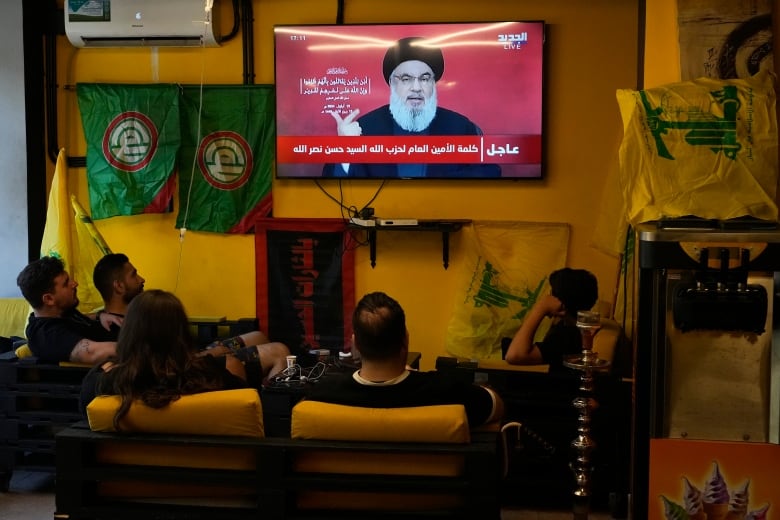
The last time Israeli forces fought a war against Hezbollah in Lebanon, Israel and the occupied Golan Heights was in 2006. It lasted 34 days, and ended with a UN-brokered truce that called for a buffer zone like the one Israel is demanding now. Hezbollah fighters were supposed to honour it then, but never pulled back.
At the time, rough terrain slowed down heavy armour, and supply shortages made fighting tough.
Israel’s military insists it’s perfectly prepared now, though even Gallant told his troops not to underestimate Hezbollah.
“When they say that they want to hit us, to destroy us, to hurt us — take them seriously. That’s their goal and they mean it.”
